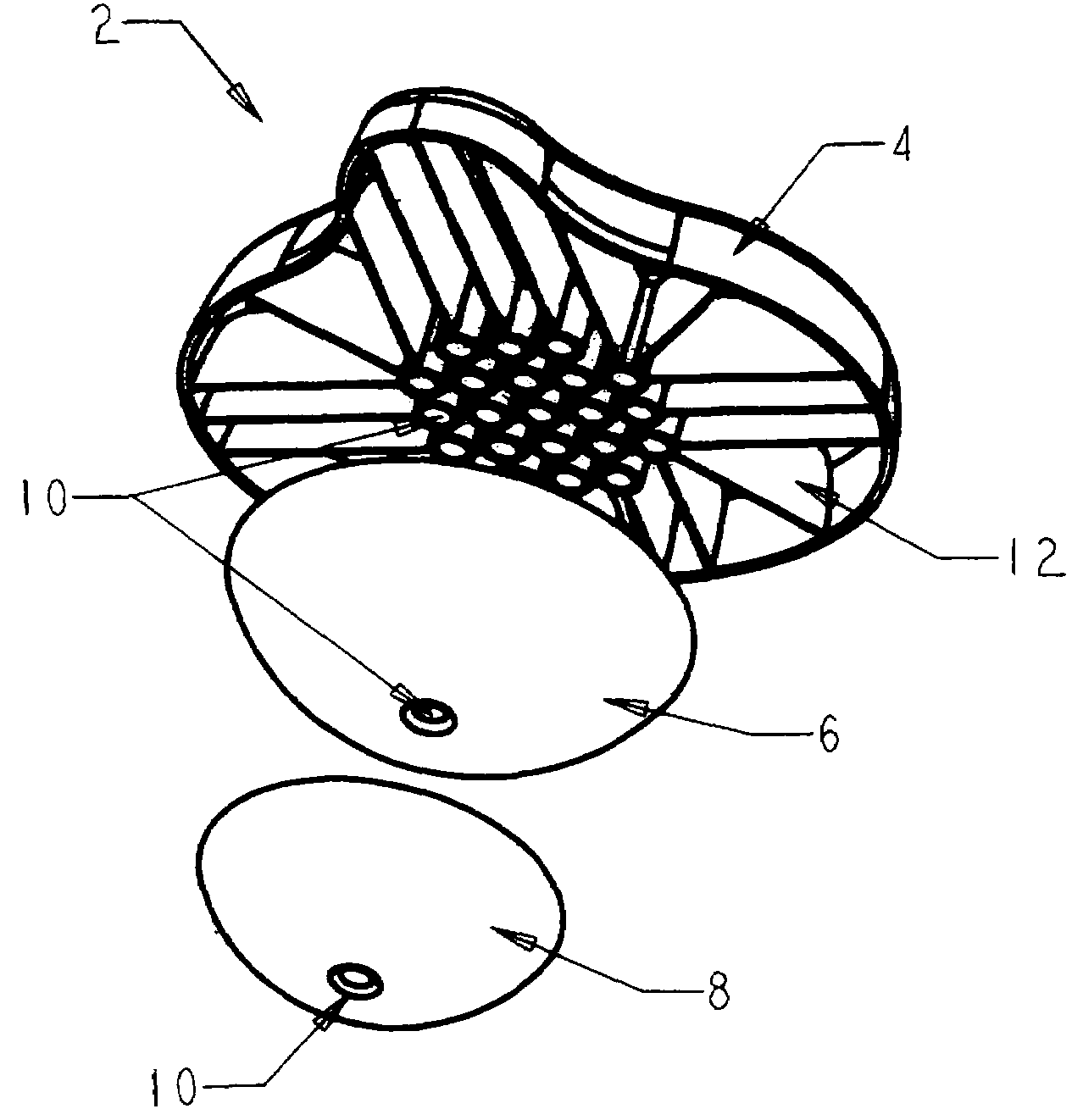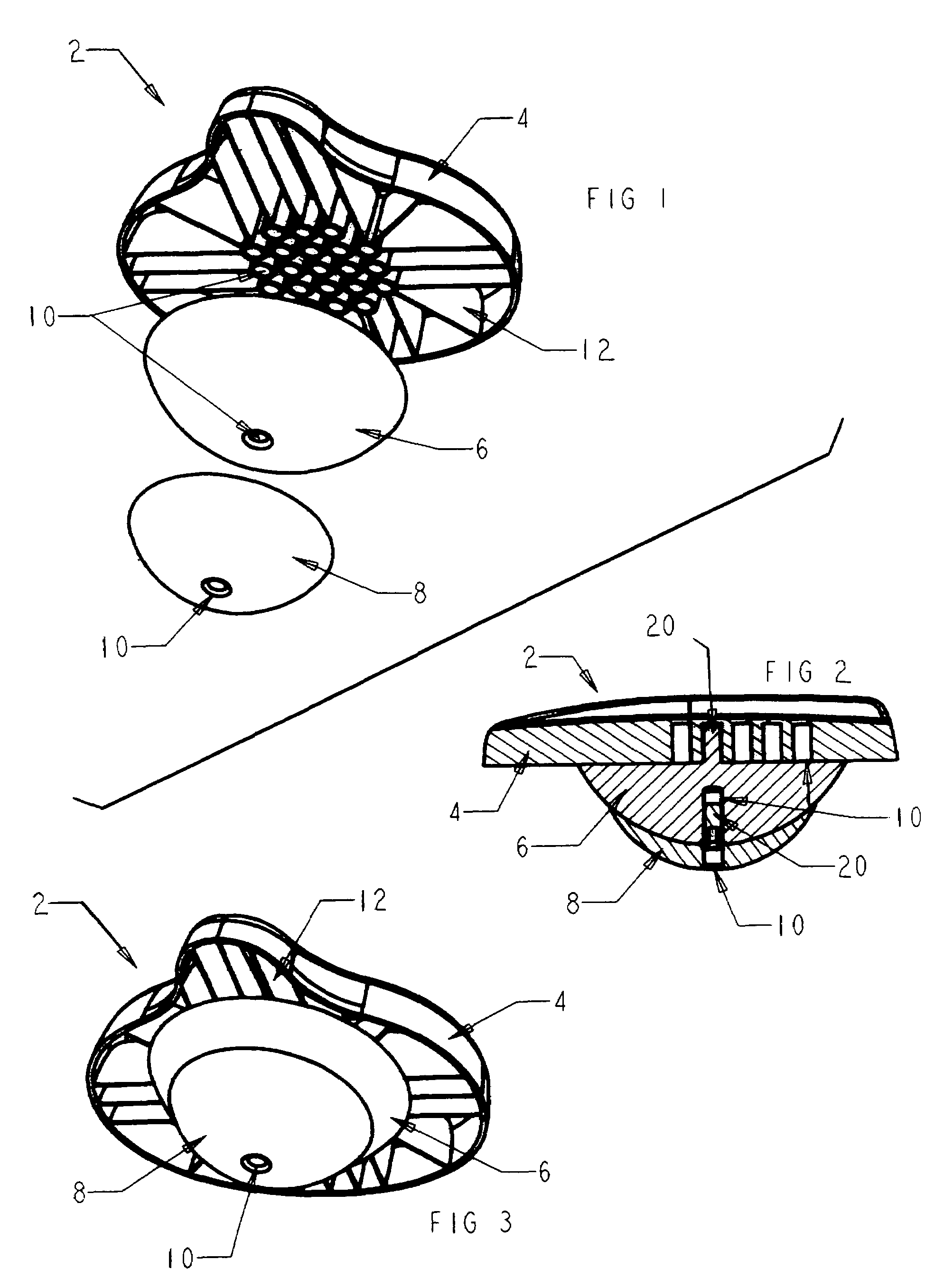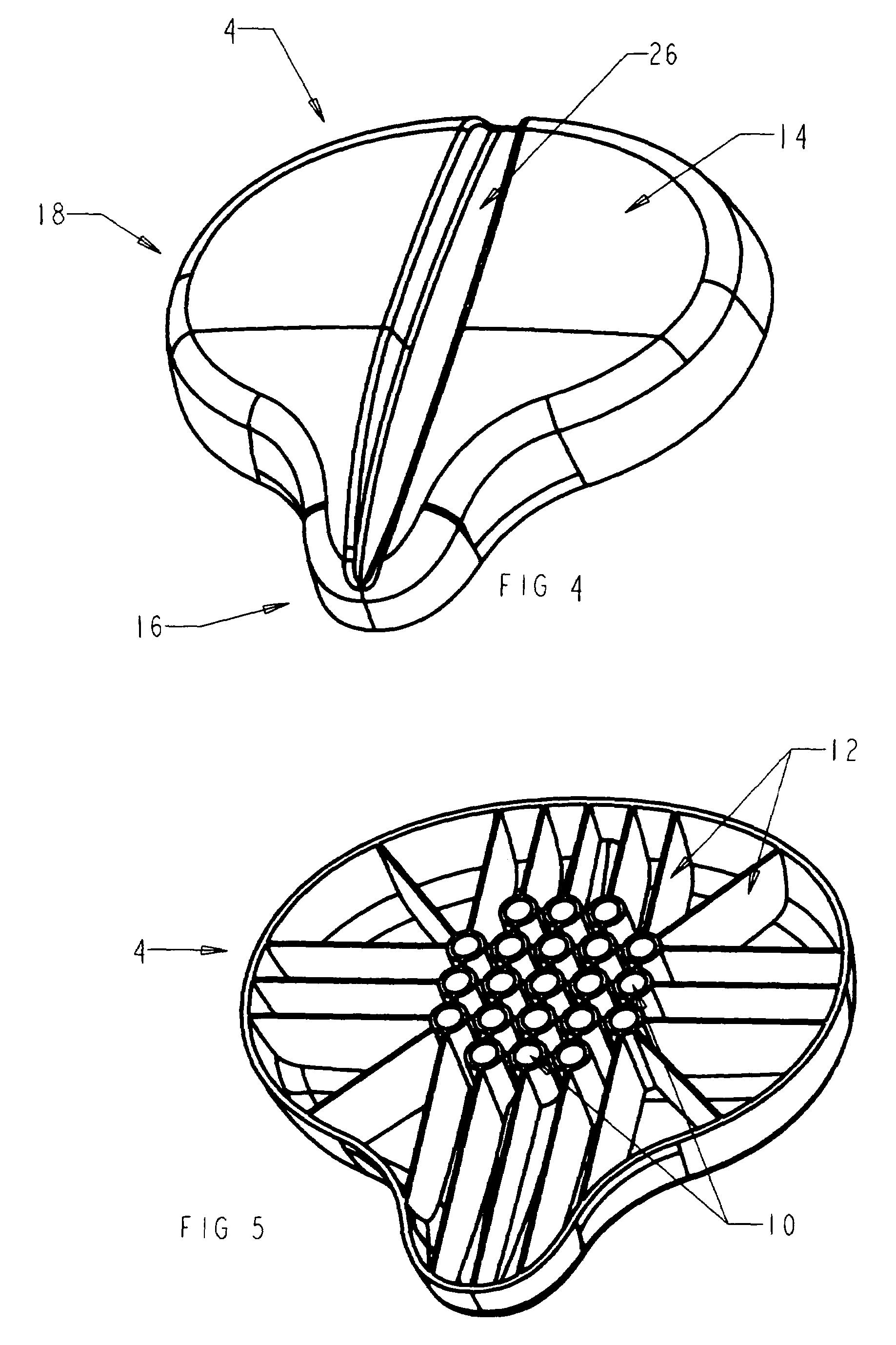Portable therapeutic seat exercise apparatus and method
a therapeutic seat and exercise equipment technology, applied in the direction of chairs, gymnastics exercises, stilts, etc., to achieve the effects of improving low back stabilization, reducing pain, and improving balan
- Summary
- Abstract
- Description
- Claims
- Application Information
AI Technical Summary
Benefits of technology
Problems solved by technology
Method used
Image
Examples
Embodiment Construction
[0070]The present invention is a portable therapeutic seat exercise apparatus 2 and method for its use that provide a lightweight personal exerciser designed for a person (not shown) to use to improve his or her physical status, and for the exercise, alignment, and stress reduction of a person's trunk, spine, abdomen, pelvis, and thighs. The present invention encourages and enhances low back mobility in place of the static nature of regular sitting. It also has a lightweight contoured seating surface 4 supported by at least one arcuate hemispherical base 6, or other base such as but not limited to base 8, that allows unrestricted motion in all directions, including twisting, tilting, rocking, pivoting, and figure eight motion. For greatest versatility, contoured seating surface 4 would be separable from base 6, or other supporting base and / or accessory combination such as but not limited to base 8 and insert 22, so that a user can adapt the present invention for a variety of therape...
PUM
 Login to View More
Login to View More Abstract
Description
Claims
Application Information
 Login to View More
Login to View More - R&D
- Intellectual Property
- Life Sciences
- Materials
- Tech Scout
- Unparalleled Data Quality
- Higher Quality Content
- 60% Fewer Hallucinations
Browse by: Latest US Patents, China's latest patents, Technical Efficacy Thesaurus, Application Domain, Technology Topic, Popular Technical Reports.
© 2025 PatSnap. All rights reserved.Legal|Privacy policy|Modern Slavery Act Transparency Statement|Sitemap|About US| Contact US: help@patsnap.com



